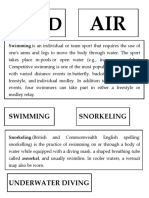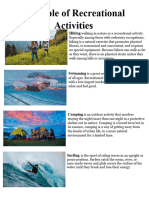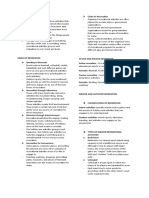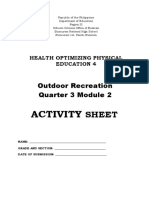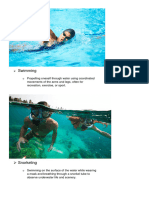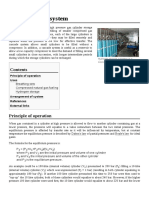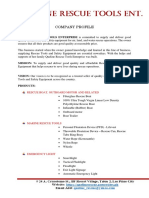0% found this document useful (0 votes)
26 views62 pagesOutdoor Activities for Stress Relief
The document discusses the benefits of outdoor recreational activities in managing stress, highlighting psychological, physical, social, economic, and environmental advantages. It emphasizes that engaging in such activities can lead to improved mental health, physical fitness, social connections, and economic productivity. Additionally, outdoor recreation fosters environmental awareness and community pride.
Uploaded by
ewankoba2221Copyright
© © All Rights Reserved
We take content rights seriously. If you suspect this is your content, claim it here.
Available Formats
Download as PPTX, PDF, TXT or read online on Scribd
0% found this document useful (0 votes)
26 views62 pagesOutdoor Activities for Stress Relief
The document discusses the benefits of outdoor recreational activities in managing stress, highlighting psychological, physical, social, economic, and environmental advantages. It emphasizes that engaging in such activities can lead to improved mental health, physical fitness, social connections, and economic productivity. Additionally, outdoor recreation fosters environmental awareness and community pride.
Uploaded by
ewankoba2221Copyright
© © All Rights Reserved
We take content rights seriously. If you suspect this is your content, claim it here.
Available Formats
Download as PPTX, PDF, TXT or read online on Scribd
/ 62



